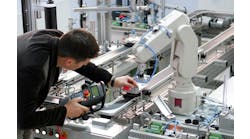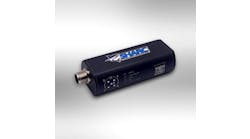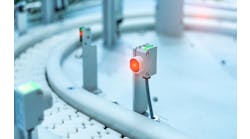Now that we have identified the four methods commonly used for the mounting of industrial sensors, what about the actual process?
The process of mounting position sensors in an industrial setting involves careful planning, precise installation and consideration of various factors to ensure accurate and reliable performance.
First, select the mounting location. We need to identify the optimal location for sensor placement based on the specific application requirements. Consider factors such as accessibility, protection from environmental conditions and the need for a clear line of sight if applicable.
Once we have finalized the location, we need to consider proper alignment. We achieve this by aligning the sensor correctly with the target or the element whose position needs to be measured. Furthermore, we need to ensure that the sensor is perpendicular or parallel to the target surface, depending on the type of sensor and the measurement axis. Once this has been determined, we must ensure that a secure mounting surface is available. This surface needs to be stable and secure. Because every application is different, we need to use appropriate fasteners and mounting brackets to attach the sensor securely to the mounting surface.
Finally, when it comes to the sensor mounting, we need to protect it from vibration and shock. With this in mind, consider using vibration-resistant mounts or isolators to protect the sensor from mechanical stresses.
Be aware of additional potential installation issues. We need to consider environmental factors. For instance, if the environment is harsh—high temperatures, humidity or exposure to chemicals—choose sensors with appropriate environmental protection ratings. Also make use of protective enclosures or covers, if necessary.
There are additional physical parameters, such as alignment with the mechanical system. We need to ensure that the sensor is integrated and aligned properly with the mechanical system or the moving part being monitored. This entails aligning the sensor with the reference point of the system for accurate position measurement.
Then we need to check clearances. Otherwise, the sensor could get damaged, if insufficient clearance is the case. To achieve good results, verify that there is sufficient clearance around the sensor to allow for the full range of motion or movement of the target. Then avoid obstructions that could interfere with the sensor's field of view or measurement.
Now, we move on to the electrical connections. We need to connect the sensor to the appropriate power source, according to the manufacturer's specifications. Once this is done, if the sensor has communication interfaces, connect them to the control system using compatible cables. For my money, the best sensors are supplied with an IP68-rated cable, permanently connected and sealed to the ratings necessary. Plug-in cables or terminals are not recommended. They are a leading source of failure and downtime.
Now that we have the sensor installed, verified in terms of all the above requirements, it is time for the calibration and verification. Here we must abide by the manufacturer's instructions. This is paramount and, if not adhered to, could lead to premature failure and incorrect data being provided by the sensor.
Following on from the calibration stage, it is necessary to verify the accuracy of the sensor's readings by checking against known reference points.
At this point, it is good practice to take a step back and prepare all the documentation required. It is vital to maintain detailed documentation of the sensor's installation, including its position, orientation and any calibration parameters. Records of the mounting process for future reference and troubleshooting should also be kept, along with some good, clear photos taken on your phone, all of which are to be stored in the planning office CMMS.
Now that we have completed all the above, the final step is the testing and commissioning. It is necessary to conduct thorough testing to ensure that the sensor operates as expected. When this is proven, integrate the sensor into the control system and perform functional tests to verify its performance in the actual industrial process.
Finally, we need to establish what regular maintenance is recommended by the manufacturer. This should result in the user’s establishment of a routine maintenance schedule to inspect and, if necessary, recalibrate the sensor. During these inspections and maintenance visits, the factory’s maintenance staff needs to address any issues promptly to prevent downtime and ensure continued accuracy.





